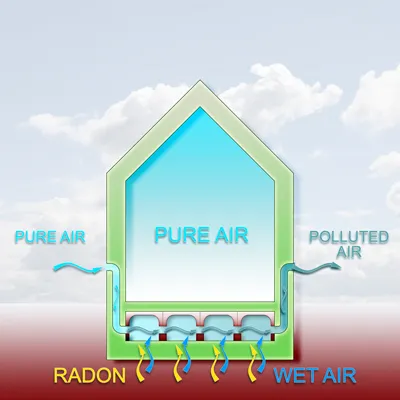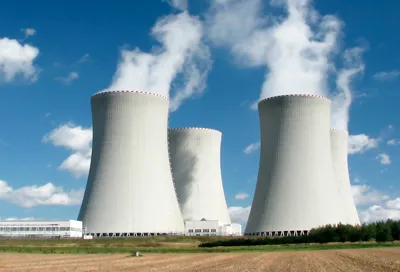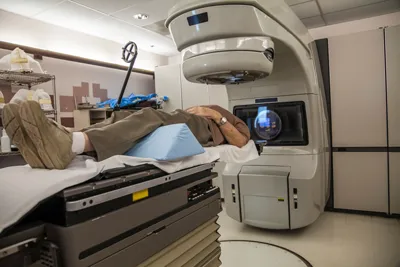If the sources are situated out of an organism they expose it outside and, in this case one uses the term ‘external radiation’. If some radioactive sources appear in the human body (via air, water, drinks, food), then they say about ‘internal radiation’. In relation to exposure from man-made sources the two distinct groups of people are considered: members of the public, occupationally exposed individuals (personnel).
Natural Radiation Sources
 The Earth population is mainly exposed by natural sources of ionising radiation (hereinafter, simply – natural radiation sources, or natural RS). Throughout Earth existence various types of radiation get to the surface from space (cosmic rays) and naturally occurred radionuclides, that exist in atmosphere, hydrosphere, earth's crust and circulate in the environment.
The Earth population is mainly exposed by natural sources of ionising radiation (hereinafter, simply – natural radiation sources, or natural RS). Throughout Earth existence various types of radiation get to the surface from space (cosmic rays) and naturally occurred radionuclides, that exist in atmosphere, hydrosphere, earth's crust and circulate in the environment. These radionuclides include: 3H, 14C, 32P, 40K, 222Rn, 226Ra, 232Th, 235U, 238U. Some of them are generated under the impact of cosmic radiation and, therefore, are called cosmogenic ones (e.g. tritium, 3H, radiocarbon, 14С, radiophosphorus 32P). Their concentration in near-surface layer of the planet is subjected by permanent flux of cosmic rays. Ionising radiation created by cosmic rays and by naturally occurred radionuclides composes the so called natural radiation background (NRB).
There are two types of exposure modes are considered: external radiation and internal radiation. If the sources are situated out of an organism they expose it outside and, in this case one uses the term ‘external radiation’. If some radioactive sources appear in the human body (via air, water, drinks, food), then they say about ‘internal radiation’.
Before coming to a human body the radioactive substances pass a complex way in the environment, and it should be taken into account at assessment of the dose obtained from a definite source.
Internal radiation accounts up to 2/3 of the effective dose, which humans get from natural radiation. It penetrates the human body with radioactive sources through food, drinks and air. A minor part of the exposure accounts for radioactive isotopes, which are being produced by the cosmic rays (mostly carbon-14 and tritium). The rest of radiation exposure accounts for terrestrial radiation sources. On average, humans get 180 mSv per year through potassium-40, which is absorbed by the human body together with non-radioactive potassium isotope, which is highly important for human activity.
Significantly higher exposure from internal radiation sources people get from uranium-238 radioactive series and it is to
 a lesser extent from thorium-232 radioactive series. One of the most important among them are Radon isotopes occurring due to the decay of Radium isotopes being the long living daughters in Uranium and Thorium series. Radon has no smell or color and can be accumulated in buildings, thus it can be very harmful for people. On average, it is the largest source of natural radiation exposure.
a lesser extent from thorium-232 radioactive series. One of the most important among them are Radon isotopes occurring due to the decay of Radium isotopes being the long living daughters in Uranium and Thorium series. Radon has no smell or color and can be accumulated in buildings, thus it can be very harmful for people. On average, it is the largest source of natural radiation exposure. People can also face terrestrial radiation in the oil and gas industries, where it is known as Naturally Occurring Radioactive Material (NORM). In the process of mining radon or radium can be accumulated in pipes or contaminate the surfaces and be very harmful for people. The amount of terrestrial radiation varies in different parts of the world due to different concentrations of uranium and thorium in soil. Thus, level of natural background exposure varies in different parts of the world from two up to four mSv per year.
Natural radiation accounts up to 85% of the annual human radiation dose. Nuclear weapon testing and nuclear accidents account only 1% among all man-made sources of exposure.
Man-made radiation sources
Man-made (technogenic) radiation sources are any radiation sources produced by humans. They may being produced for use of their radiation, or for other purposes using the processes taking place in them (e.g., production of electric energy or heat).
Man-made radiation sources are classified onto radionuclide radiation sources and generators of ionising radiation.
The mankind has created the hundreds of artificial radionuclides and got mastered to use the atomic energy both for military and for civil purposes —for energy production, in health care, etc. These activities increase exposure as individuals as well as the Earth population at all. Individual doses of different people from man-made sources vary in a broad band. In majority of cases these doses are negligible, but sometimes the technogenic exposure has intensity that in thousands times more than natural one. But, it should be noted, that doses formed by technogenic sources are easier to be controlled than doses related to radioactive sediments from nuclear bangs and accidents at NPPs, as well as the doses predetermined by cosmic and on-Earth natural radiation sources.

|

|
There multiple and wide uses of man-made sources that one may encounter with. They are:
- Generation of electricity and heat at NPPs and transport nuclear engines, and also by radionuclide sources spacecrafts, autonomous power supply and thermal sources);
- Uclear fuel cycle;
- Sterilizing of goods and pasteurization of food using industrial irradiators (industrial accelerators and gamma irradiators);
- Non-destructive testing (NDT) and quality control in manufacturing, building and construction, transport, etc.;
- Control of technical processes, level of liquids in vessels, defining parameters of products and environmental samples such as thickness, moisture content (radiation gauges);
- Exploration of fossils, well logging and control of drill to stop;
- Manufacturing of IR measuring equipment;
- Research of substances’ atomic-molecular structure (X-ray fluorescence analysis, X-ray diffraction analysis, electron-microscope investigation, activation analysis, neutronography, etc.);
- Control of technological processes in various areas using radioactive tracers;
- Numerous applications in medicine using X-ray machines, accelerators, radionuclide sources, in prospect – medical zero power nuclear reactors (medical radiology);
- Manufacturing of radionuclides for different purposes, including radiopharmaceuticals for nuclear medicine;
- Management of materials contained natural radionuclides in concentrations increasing the natural ones (Naturally Occurring Radioactive Materials, NORM);
- Transportation of nuclear and radioactive materials;
- Activities at the contaminated territories;
- Elimination of consequences of nuclear accidents;
- Radioactive waste management;
- Using X-ray examination systems for luggage and cargoes control, X-ray inspection at public places and sites, nuclear forensics;
- Scientific researches;
- Education and training.
- Members of the public
- Occupationally exposed individuals (personnel).
Professionals are exposed to radiation due to their occupations and to the sources they are working with. They can be engaged in such industries as, e.g. nuclear medicine, nuclear power, oil/gas mining and processing, security and others. Such individuals have to be controlled and monitored for radiation exposure being equipped by personal dosimeters on a daily basis, in order to comply with the set of radiation safety standards.
In the great majority of countries the annual collective effective dose from all types of radiation is approximately 1000 Sv per 1 million of inhabitants in accordance to IAEA recommendations